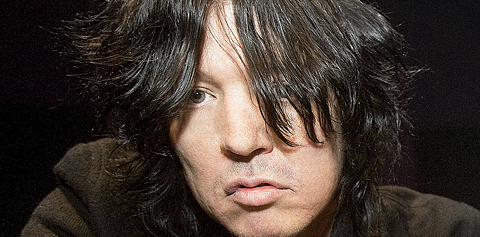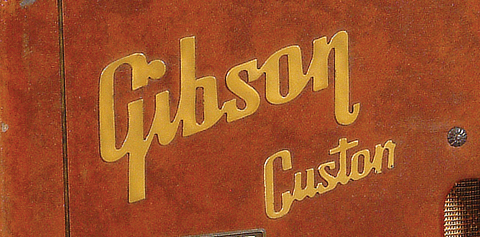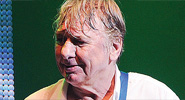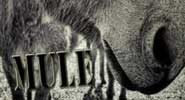
Tom Keifer is a tad young to be on the (very) long list of musicians inspired first and foremost by the Beatles’ “arrival” in the U.S. in 1964. But he’s not too young to inspired by a TV show inspired by the Fab Four.
Keifer’s earliest musical memories were born as he plopped in front of the tube to watch the mid-’60s sitcom “The Monkees.” The show’s avant-garde camera work, goofy plot, slapstick humor, free-flowing script, and everything else about it were right up his alley – but his most-indelible memories were created by its music.
“Mike Nesmith was a pretty amazing guitarist, and the songs were actually very good pop tunes,” he said. “That’s what made me pick up a guitar and take lessons; my mom found a teacher who would come to the house, and he made me read songbooks, strum chords, and sing songs – anything I liked and wanted to learn.”
Those lessons were about more than guitar, however – they were what would prove to be vital instruction on how to be a singer/songwriter. Within a few years, he was proficient enough to pick up licks from his record collection.
Keifer was still in high school when his cover bands started paying their dues in the smoky bars on the New Jersey and Philadelphia club circuit. “It was a lot of fun, but there was a point where I wanted to make records,” he said. “I thought about the musicians I looked up to and realized it was a dead-end to just be playing covers. So I pulled out of the scene to focus on writing songs.”
In 1985, he resurfaced with a new band and a set of original, straightforward hard-rock songs strong enough to earn a recording contract. It first recorded effort, the 1986 album Night Songs, was square in the wheelhouse of hard-rock fans. Propelled by Keifer’s playing, Cinderella became one of the era’s predominant acts, its music teetering on the stylistic edge of glam/hair metal even as he set himself apart by wielding a plain ol’ Telecaster when most players had superstrats with custom finishes and showy graphics.
With its second album, Long Cold Winter, Cinderella further separated itself from its contemporaries with a far more stylistically diverse sound and vibe rooted in the ’70s rock of the Stones and Aerosmith that became the band’s trademark; three of its four reached platinum or multi-platinum status in sales. By 1994, its last studio effort, Still Climbing, proved a case study in how grunge and a lack of support by MTV (which mattered at the time) could crush valid music.

Keifer has spent the years since Cinderella’s heyday living low-key. The band still tours, but not heavily, and though it hasn’t released new music since Still Climbing, his drought is set to end early next year with a solo album of 14 songs that stay true to form – killer blues-rock playing and tones, hooks galore, and strong songwriting. The opener, “Solid Ground,” offers pure Keifer guitar and vocals with a feel reminsicent the Stones’ Exile On Main Street while the remaining tracks are, much like his life the last 15 years, an up-and-down ride.
When did you start playing in a band?
I was 12 or 13 when I starting jamming with friends in a garage, doing Stones stuff like “Jumpin’ Jack Flash.” Through different bands, I got into playing everything from Deep Purple to the Eagles to Skynyrd, Zeppelin, Aerosmith, James Gang; I love that stuff. The ’70s were a great time to grow up and become a musician, because there was so much variety and great music. I was a huge Fleetwood Mac fan; Rumours blew my mind. I also got into Frampton Comes Alive and the live Skynyrd record.
Does Keith Richards have something to do with the fact you’ve played a Telecaster so much throughout your career?
Yeah, absolutely. But I don’t claim to get close to his amazing rhythm tone.
Clean, but not really…
Yeah, and it has a depth – a thickness, almost like there’s a harmonic underneath.
Who else is a major influence?
Jimmy Page; the blues thing comes from him more than anybody, though I didn’t realize it at the time. Obviously, someone from my generation learned about blues second-hand because our rock heroes were inspired by it. I was 18 or 19 when a friend of mine, a drummer in the band I was in, gave me B.B. King Live at the Regal. I said, “This guy reminds me of Jimmy Page…” (laughs). He looked at me and said, “Actually, it’s the other way around!” It was like, “Oh, the guys I like actually learned it from someone else…” From that point, I started digging, and have been a huge fan of the blues since my late teens, when I got into like Elmore James, Robert Johnson, Son House, Muddy Waters, Johnny Winter – all that stuff.

Were there any other particularly influential rock players?
Joe Walsh is amazing, and I loved Lindsey Buckingham and the stuff Mick Jones did with Foreigner.
When did you discover your penchant for songwriting?
I remember writing songs when I was pretty young, writing lyrics. They were like the Monkees or Partridge Family songs I was consuming on television. But they were pretty good in that they had a feel and structure. I always find songwriting to be very easy if you let the song come to you and not force it. So I never really sit down with an instrument to try to come up with a song unless I have an idea, and ideas usually pop into my head, I can be sitting on a plane or in a business meeting – the most unlikely circumstances – and get an idea.
To me, it comes down to lyrics. A great song, you should be able to sit and play on a single instrument, and the lyrics and melody should carry any arrangement, production, or instrumentation. As long as I have that, writing comes easy.
Sometimes, you wait years for something to inspire you. I’ve had that happen, but I’ve never really worried about it. I’ve gone four or five years where I didn’t write a single note, and I don’t care, because eventually something pops into my head.
When did keyboards enter the picture?
We had a piano in the house and I figured out things by ear. At one point I was taking lessons, but I didn’t stick with them – I wasn’t interested in technique or theory.
How did Cinderella come together?
It evolved out of relationships from the club scene, even as I made the decision to pull back from playing every night and partying. I needed to buckle down, write songs, and develop a sound. So, I started working a day gig. I had been in bands with [bassist] Eric Brittingham, so he and I formed Cinderella with a couple guys from other bands. We went through a few changes before Fred Coury and Jeff LaBar joined.
How long did it take for Night Songs to come together?
That was the story pretty much every artist tells, where you have the biggest pile of songs for your first record. And we chose from 60 or 70 songs and buckled down. From that point until we were signed, we were picking from songs that had been written over two or three years. We’d rehearse and play an occasional gig, but mainly we were focusing on bringing those songs to life. After we narrowed it to 10 or 11, we cut ’em, and that was that. It took about six months to record once we brought in Andy Johns to produce – a good amount of time, and about average for all of our records.
How did you get hooked up with Andy?
When it came time to start thinking about producers our manager was throwing different records at me, saying, “Listen to this. What do you think of that?” Andy’s name came up because he had produced a band called The Stone Fury. I loved the sound. At the time, I didn’t know anything about what producers did or how records were made. So I said, “Okay, let’s get him. What else has he done?” Our manager told me, “Oh, a couple of little bands you might have heard of – Led Zeppelin, Rolling Stones.” I was like, “Holy s**t! Yeah, let’s get him!” (laughs)
Another of my favorites was Humble Pie, with Steve Marriott; Andy has worked with everybody, but it’s funny that we chose him because of the Stone Fury record.
A significant part of the rock scene in the ’80s was about image. Were you guys all-in when it came to the clothes, the hair – everything you had to go through?
Well, just like the music, I think in your formative years as a musician or an artist, you’re inspired, visually, by the people you admire. Many of the acts I grew up listening to in the ’70s were flashy, borderline glam – Jagger, Steven Tyler, Janis Joplin. Combine that with the attitude in the ’80s, when everyone was trying to take something to a new level… that’s how the over-the-top looks came together. You made it your own.

In your view, was Cinderella a hair-metal band?
Uhhh, we had hair (laughs)! I think the term was just a coined phrase, and it has a derogatory connotation with people who maybe didn’t have talent, couldn’t play. If it’s used in that context to describe us, I’d take offense, but if people are simply categorizing us stylistically, I guess that makes us one. In Cinderella, we did what we did, and in the ’80s a lot of people in the industry started to listen more with their eyes than their ears.
Every era has a look. In the ’70s, some bands had giant, crazy hairdos and wore bell-bottom jeans. I think ours was so-in-your face – because of MTV – and a lot of mystique was lost because exposure was constant. It got to where labels were signing bands more for their look than their talent.
Today, the term “hair metal” is mostly about nostalgia. Despite the band’s look on the cover of Night Songs, your music was different from other hair metal bands…
All the bands were different, and that’s one of the things I like about the ’80s. A lot of the looks may be similar, but from us to Poison to Bon Jovi to Guns ’N Roses to Tesla to Ratt, the music is really different – different-sounding vocalists, different writing styles, a lot of variety. You might be able to pigeonhole everyone by look, but if you closed your eyes and listened… That was what was cool about it. A lot of the bigger bands from that era had a unique sound, like it or not. There are people who love Cinderella and there are people who don’t love Cinderella. I’m quite sure there’s a lot of people who can’t stand the sound of my voice (laughs), and that’s just how it goes, you know? Not everybody’s gonna love you, but there was a lot of uniqueness in the ’80s.
What made up the Cinderella sound, in terms of guitar and amp tones, for you and Jeff?
Pretty basic stuff – Les Pauls, Teles, Marshalls, Fender Bassmans. Jeff, for the most part, played Les Pauls and Strats, and his amps were different from mine, but sometimes he’d use whatever came in when the producer would just say, “Go to SIR (instrumental rental) and bring over every Marshall!” Most of the time, I used my own because I’m kind of a freak bout collecting old Marshall and Gibson and Fender amps; I had an SIR of my own! But on the first record, it wasn’t necessarily vintage stuff; I was playing a Les Paul and a Strat – late ’70s models. And we rented an early-’70s [Marshall] Super Lead because that’s the first Marshall I ever had, but lost on the club scene. So we rented or borrowed one that sounded pretty good, and it was used for most of the tracks.
That record was pretty successful, so after that I could buy pretty much any guitar I wanted – and I did! With the first royalty check, I went and bought a Jaguar, then I drove the Jag to the airport, flew down to the Dallas Guitar Show, and bought an early-’50s Tele, a ’59 Les Paul sunburst, and a ’59 Strat, got back on the plane and took them home. That was the beginning of the disease, and from Long Cold Winter on, it was game on! ’Bursts, I played them live for years. Same goes for the amps, I’ve got a bunch of old Super Leads. I’m sitting here looking at a blackface Bassman, which I love the sound of. And, I’ve had, over the years, a slew of different tweed Gibson, Fender, ’59 Twins… when you’re a collector you trade and sell, it’s a revolving door. But I’ve had pretty much everything over the years, and used it all. They’re like a color pallet when you paint a picture;they create their own colors on a record, and each one is special. An album is forever, and I’ve always wanted to have every color available when I’m in the studio, so I’d have the truck pulled up with just about every instrument and amp that I had (laughs)!
There’s plenty of video of Cinderella live from back in the day. One clip is from the Peace Music Festival in Moscow in the summer of ’89, and you’re playing a Tele…
That was a… ya’ know, I’ve had a lot of those, but it probably a ’53.

Do you still have it?
No, it went in a trade or somewhere. Actually that one might have been busted – I used to throw it across the stage during the show. Now I have a 1950 nocaster, and I’m taking a little better care of that one!
When did you get it?
In the early ’90s, and I played it on tour right up until 2006. But I don’t take it or the ’Burst anymore. They’ve soaked up so much perspiration, and I don’t want that in the pickups anymore. I’m lucky they still work.
What are you playing onstage now?
I have a reissue that Fender made of the Nocaster that’s really badass. Some of the newer stuff they’re doing is great. And, Gibson took pictures of my ’Burst and did a reissue for me that’s very, very similar. I use those two for touring. They’re great guitars.
When did your collection peak in terms of numbers?
(laughs) I’m trying to think. It’s considerably smaller now, but it probably peaked in the early ’90s at upward of a hundred guitars. It was out of hand!
(laughs) Says who?
When I moved to Nashville, a lot of stuff turned into new toys because I built a huge studio at my house and got a bunch of gear. The new record was produced independently, and we wanted a great facility to work in on any day, at any time. Part of the collection went toward building that.
So, how many guitars do you have now?
About 35, 40.
And how many amps?
Twenty-five, maybe more; six or seven Super Leads, three or four Bassmans, a couple of old Gibsons in tweed – Stereo Tremolo and the odd birds that are cool for adding color here or there. I still have six Marshall Majors, and some cool effects – two Echoplexes, an Echorec made by Guild. That’s the one with a magnetic steel drum that turns, and heads that go all the way around it. Andy Johns told me once, “If you ever find a Binson Echorec, try it, because that’s what I use on [Led Zeppelin’s] ‘When the Levee Breaks,’ to add the waves to the drums.” So, I now have two of them, and they’re great, like, right in front of a Marshall. They have a very different sound than an Echoplex – they create ambience in delays and a tonal change at the front end of the amp.
Your new record is several years in the making. What has the process been like?
I started writing for a solo album in the mid ’90s, after the band kind of fell apart and we parted ways with Universal. The songs just went into a pile until 2003, when I started recording. I toured with Cinderella a lot in the meantime, and my wife and I had our first son during the making of the record – there’s been a lot of life and touring and voice problems that have taken me away from making the record for long periods of time.
It’s been a long process of recording, re-recording, mixing – the record’s probably been mixed a dozen times – mastering and editing and rearranging. It’s been kinda crazy, but it’s also been a labor of love. I went into it with the attitude that it’ll be done when I like it. And it was kind of cool to not have a label, so it was done with the spirit of “When it’s great, it’s great and that’s that.” I produced it with my wife, Savanah, who’s also a musician and songwriter, and my good friend, Chuck Turner, who’s a great engineer and producer.
Did you write all the songs yourself?
I wrote a lot myself, some I co-wrote with Savanah, and there were a couple other writers involved.
Cinderella fans will be anxious to hear it. How are the songs similar and how are they different?
We’ll start with different; I’m singing more in the middle part of my voice. With Cinderella, I was a third higher or in a higher register most of the time. That’s the main difference, though in places you hear that Cinderella voice. I developed a new part of my range as a result of all the vocal problems I’ve had; I had to figure out a new way to sing because they told me I was never going to sing again.
What’s the same is it’s still inspired by that blues/roots hard-rock drive. The dynamics and variety and the instrumentation and styles of music; I think the record runs the gamut from intimate acoustic things to some pretty hard rock and a lot in-between, which as Cinderella records progressed, I really tried to do, with more instrumentation, more color, more variety. On Long Cold Winter we had a straight up blues song and we had “Coming Home,” which had a country feel. This record carries on that tradition, and again, that’s what I loved about the bands I grew up on, like the Stones. They did a lot of different kinds of music and styles. That mix of dynamics and variety makes for a more interesting record.
Which guitars and amps did you use most on it?
I still use all my vintage stuff in the studio, so the ’59 Les Paul Standard was used a lot, the Tele was used a lot, and I got a ’56 Gretsch Sparkle Jet that sounds pretty mean through an old Marshall. For acoustic stuff, I used a Gibson Southern Jumbo, I think it’s a ’55. It feels like balsa wood, it’s so dried out, and notes just ring… I mean it vibrates! It sounds amazing – just put a mic in front of it and you’re done!
The amps were mainly Marshalls, I’ve got one Marshall, in particular, that I love. It’s an old Super Lead, and it has a really old cabinet that, I think, has 20-watt Greenbacks, and it has that solid old brown grillecloth. It’s old as dirt and sounds really good. You can get so many different sounds out of those Super Leads. If you’ve got three or four really different guitars like the Sparkle Jet or the Telecaster and the Les Paul, and all the different pickup positions and variances you can create with the Volume knobs and how hard it hits the front end of the amp. It re-creates what’s coming off the guitar in your hands, and that’s what I’ve always liked about them – they’re very dynamic and responsive.
I also used the blackface Bassman into a 2×12 cab or a Marshall 4×12 – that’s a cool sound – and the Gibson with tremolo. We did so much crazy stuff, just to experiment, because there was nothing but time, it was like, “Okay, let’s try this.”
This article originally appeared in VG January 2013 issue. All copyrights are by the author and Vintage Guitar magazine. Unauthorized replication or use is strictly prohibited.









 Pioneering bassist Jack Bruce, who rose to prominence as a member of Cream, is set to release his first studio album in a decade. Dubbed Silver Rails and set for release April 15, it was recorded at Abbey Road studios, London, and produced by Rob Cass. Musicians collaborating with Bruce on the album include Phil Manzanera, Robin Trower, Bernie Marsden, Uli Jon Roth, John Medeski, Malcolm Bruce, and Cindy Blackman Santana. He will begin a tour of the U.K. on March 13.
Pioneering bassist Jack Bruce, who rose to prominence as a member of Cream, is set to release his first studio album in a decade. Dubbed Silver Rails and set for release April 15, it was recorded at Abbey Road studios, London, and produced by Rob Cass. Musicians collaborating with Bruce on the album include Phil Manzanera, Robin Trower, Bernie Marsden, Uli Jon Roth, John Medeski, Malcolm Bruce, and Cindy Blackman Santana. He will begin a tour of the U.K. on March 13. Squier’s 60th Anniversary Classic Vibe ‘50s Stratocaster has a maple neck with a “modern C” profile, 9.5”-radius maple fingerboard with 21 medium jumbo frets, three vintage-style single-coil pickups with five-way switching, three-ply parchment pickguard, vintage-style synchronized vibrato bridge with six saddles, vintage-style tuners, and an Aztec Gold finish with gold hardware. For more, go to
Squier’s 60th Anniversary Classic Vibe ‘50s Stratocaster has a maple neck with a “modern C” profile, 9.5”-radius maple fingerboard with 21 medium jumbo frets, three vintage-style single-coil pickups with five-way switching, three-ply parchment pickguard, vintage-style synchronized vibrato bridge with six saddles, vintage-style tuners, and an Aztec Gold finish with gold hardware. For more, go to  Gator Cases has expanded its Journeyman series to include cases custom fit for Gibson Les Paul and 335 guitars. Constructed of plywood, each has a pebble-weaved burlap wrapping with espresso brown trim, antiqued brass hardware, royal blue crushed-velvet interior, and an accessory storage compartment. Visit
Gator Cases has expanded its Journeyman series to include cases custom fit for Gibson Les Paul and 335 guitars. Constructed of plywood, each has a pebble-weaved burlap wrapping with espresso brown trim, antiqued brass hardware, royal blue crushed-velvet interior, and an accessory storage compartment. Visit 


 Perri Ink Custom Guitars’ Gypsy model guitar is the company’s first original design. It has a swamp ash body with ash pickguard, quartersawn maple neck, rosewood fingerboard, clay inlays, and a reverse headstock. Other features include three Seymour Duncan Antiquity Texas Hot pickups and a Callaham vintage-style vibrato. Each is custom-built to order, and made U.S. For more, visit
Perri Ink Custom Guitars’ Gypsy model guitar is the company’s first original design. It has a swamp ash body with ash pickguard, quartersawn maple neck, rosewood fingerboard, clay inlays, and a reverse headstock. Other features include three Seymour Duncan Antiquity Texas Hot pickups and a Callaham vintage-style vibrato. Each is custom-built to order, and made U.S. For more, visit 


